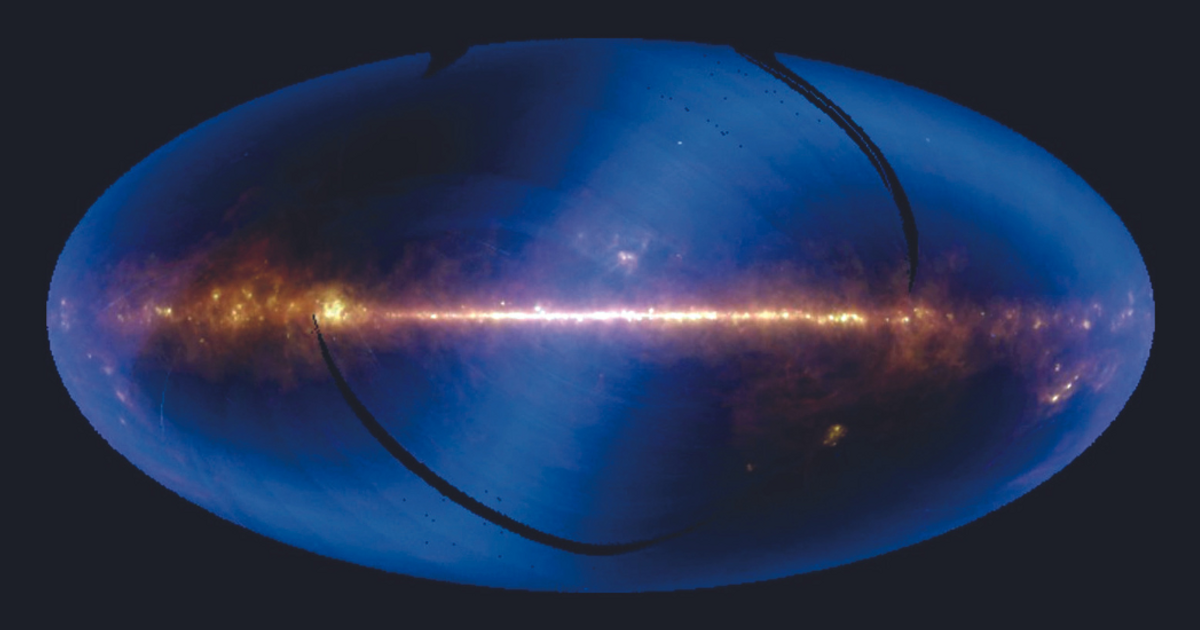Editorial image © NASA/JPL-Caltech
Infrared observations have become an indispensable part of astronomy. Sensitive infrared cameras record thermal radiation from dark dust clouds in the Milky Way. The James Webb Space Telescope, launched two years ago, studies exoplanets, protostars and distant galaxies at infrared wavelengths. Almost every major telescope on Earth is equipped with infrared detectors.
But forty years ago, in 1983, infrared astronomy was still in its infancy. That changed that year with the launch on January 25 of the Infrared Astronomy Satellite (IRAS) – a joint project between the US, the UK and the Netherlands.
IRAS has conducted pioneering research on comets, star-forming regions, and dust clouds around newborn stars and galaxies. But the revolutionary satellite also mapped the entire starry sky in infrared wavelengths for the first time in history.
The resulting map (a sort of “flat” version of the entire celestial sphere) shows the central plane of our Milky Way Galaxy in particular, as a bright horizontal bar. The spots on the far right (just below the central band) and just above the center are large star-forming regions, in the constellations Orion and Serpent, respectively. The larger spot on the lower right is the Large Magellanic Cloud, a companion to the Milky Way.
The light blue diagonal band, which extends further along the lower left and upper right edges of the map, is caused by relatively warm dust grains in our solar system. They emit infrared radiation of higher energy, with a shorter wavelength. Finally, the black lines are areas of the sky not observed by IRAS.
After the successful IRAS mission, in which several Dutch astronomers participated, several other infrared satellites followed, such as the American Space Observatory (ISO), the Spitzer Space Telescope, and the European Herschel Space Telescope. As with the James Webb Space Telescope, both built on pioneering work by IRAS.
A lot can change in forty years, especially in a rapidly evolving field like astronomy.


